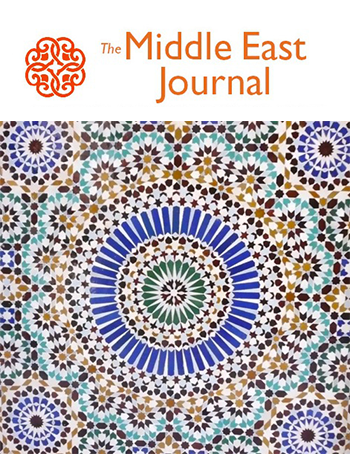
DAILY STAR
Bringing Local Legends to Life
'Her style is simple but eloquent and can be read by both children and adults. Working on simplified stories of legends, Tarnowski garnishes them with vivid imagery and colourful illustrations - researching thoroughly to bring the god to life.'
Bringing local legends to life as a way of redefining our identity. There may be more than just myth to the Phoenician and Canaanite gods and goddesses, according to author Wafa Stephan Tarnowski.
Mythology is a way of explaining the invisible and how nature evolves, says Wafa Stephan Tarnowski, author of Dances with the Gods, a children's book of Canaanite-Phoenician myths and legends.
'One of my favourite stories is that of Adonis, the handsome God of Youth and Beauty ho was killed by a wild boar - and was ‘reborn' in the form of a carpet of red poppies in springtime,' she continues, a warm, beaming smile spreading across her face.
According to legend, Adonis' lover Ashtarout, the goddess of love, was so sad about his death that the god El decreed he would return from the afterworld in the form of the red poppies and the reddening of Afka river. This is now called, Nahr Ibrahim - the scientific explanation being the bits if red hermatite rocks in the river, carried down by the melting snow.
The former Lebanese-Australian radio broadcaster and journalist came up with the idea of writing the book when her British-born husband, Andrew Tarnowski was posted to a Reuter's position in Cyprus. 'My children were fascinated by the Greek legends that they were taught about in school - I realized that they should know about Lebanese myths as well,' she explains.
After extensive research into the subject, Tarwnoski discovered that very few books tackled the topic simply enough for her children to read. 'Our children's generation's myths and legends are characters like Superman and He-man,' she stresses - adding that the present generation does not know about the old myths that have played an essential role in the evolution of the Lebanese culture and language, as well that of other Arab and European countries.
'They don't realize the present day connection to these myths,' she says, and pens her stories accordingly. Tarnowski divides her book, which took three years to complete, into two parts - the first a summarized history of Canaan and the second a 17-chapter collection of short stories that she has compiled from the myths.
All of the myths about the gods that the Canaanite-Phoenicians worshiped 'were passed on by word of mouth, or were written on papyrus,' continues Tarnowski. The papyrus rotted over the centuries but 70 years ago, a Syrian peasant discovered clay tablets inscribed with the same stories. The tablets of Ugarit mentioned 13 gods that the Canaanite-Phoenicians believed in; each with a different name, function and gender. Tarnowski emphasizes on the historical significance of the Canaanite-Phoenicians, who were named after Noah's son Canaan (also called Phenix/Phenik).
This group of people included the inhabitants of the coastal cities of modern (Tyre, Sidon, Tripoli, Beirut and Byblos) and Ugarit in , extending eastwards to Baalbek and bordered by the River Jordan. She speaks anxiously about her desire to reeducate the Lebanese - old and young - about their "beautiful" past.
'I was shattered when I had to leave when war broke out and have always wanted to do something meaningful for my country,' she said. The Canaanites have always been celebrated sailors and merchants, and Tarnowski cites several Biblical text that describe them as 'strong' and 'powerful'.
The book of Isaiah, for example, described the city of Tyre as 'the bestower of crowns, whose merchants are prices, whose traders are renowned in the earth.'
The Phoenicians were the founding fathers of modern Latin alphabet, but their influence is even greater than that. Melkart, the patron god of Tyre discovered that purple Murex dye (a unique shade also known as Tyrian purple). He made a dress for his lover Tyrus, and from that day purple became the symbol of wealth and royalty.
'Each city had its favourite gods, usually a father figure, a mother figure, and a son,' explains Tarnowski. For example, Bylos honoured the god El (the father of all gods), Baalat-Gebal (the lady of Byblos) and Adonis (the god of youth and beauty), while Sidon preferred Baal (the lord), Ashtarout (goddess of love) and Eshmun (god of healing and medicine), Tyre had temples for Baal, Ashtarout and Melkart (the god of merchants).
The two favourite gods of Beirut were Baal-Berit (Posidon) and Ashtarout. Modern-day cities like Beirut and the ancient ruins of Baalbek have derived their names from the gods, as have certain words in the Arabic language like ‘mot' or death (from the god of death and the underworld, Mot) and ‘shams' or sun-shine (from Shafash, the goddess of the sun).
"The term ‘Europe' comes from the myth of Princess Europa of Sidon who was kidnapped from her homeland and taken to Greece by Zeus, the father of all gods," she says, gesturing at an illustration of the bull-figure of the god Zeus. The symbol of Tanit, the goddess of heaven and the moon who was worshiped by the people of Carthage is still used in Tunisian jewellery and paintings.
"One of the traditional dances a girl performs on her wedding night is done with arms outstretched towards the moon while twirling around," Tarnowski says, as she gets up to perform her exhilarating version of pirouettes around the room.
Dances with the Gods also provides a mystifying account of Elissar, Princes of Tyre who was to become Dido Queen of Carthage - one of the few legends that are known today and have inspired dance.musicals in (Caracalla) and abroad (Dido and Aenas - an opera by Purcell). Each of Tarnowski's stories has a moral, and there is always an underlying piece of advice or warning to the reader - as in the account of the cedar trees.
When you visit the cedars, be good to them. Do not make barbecues with the wood nor cut the branches...close your eyes and notice how lovely they smell.
Her style is simple but eloquent and can be read by both children and adults. Working on simplified stories of legends, Tarnowski garnishes them with vivid imagery and colourful illustrations - researching thoroughly to bring the god to life.
"I had to make sure that everything fitted in - from the clothes to the description of food," she says. This, she continues, was essential in designing the illustrations "that took 38 hours each to perfect." Myriam Nabil Misk combined different visual textures by overlapping pencil drawings with photographs and computer graphics to give a realistic effect but still retaining a mythical, cartoon-like aura. Authro and illustrator worked side by side throughout - collaborating in every detail to achieve the desired result.
Tarnowski, who launched her book at the Beirut's Noah's Ark bookshop last week, haas several projects lined up in the near future, but is hesitant to disclose what they are.
"I feel that I have to allot enough time to be around for my children in case they need me," she explains. In the meantime, she still teaches commercial English at the Pigier School in Gemaizeh, and has completed her MA in Sociology at AUB.
"I am really interested in writing about the Middle East ," she hints, "and hope that my book bridges the gap between East and West - so that they realize how much we have contributed to their civilization." She pauses for a few seconds and ponders for the precise words to express herself: "This is my contribution to the Lebanese - to make them more aware of their identity."
A review by Lana Captan - THE DAILY STAR: LIVING



